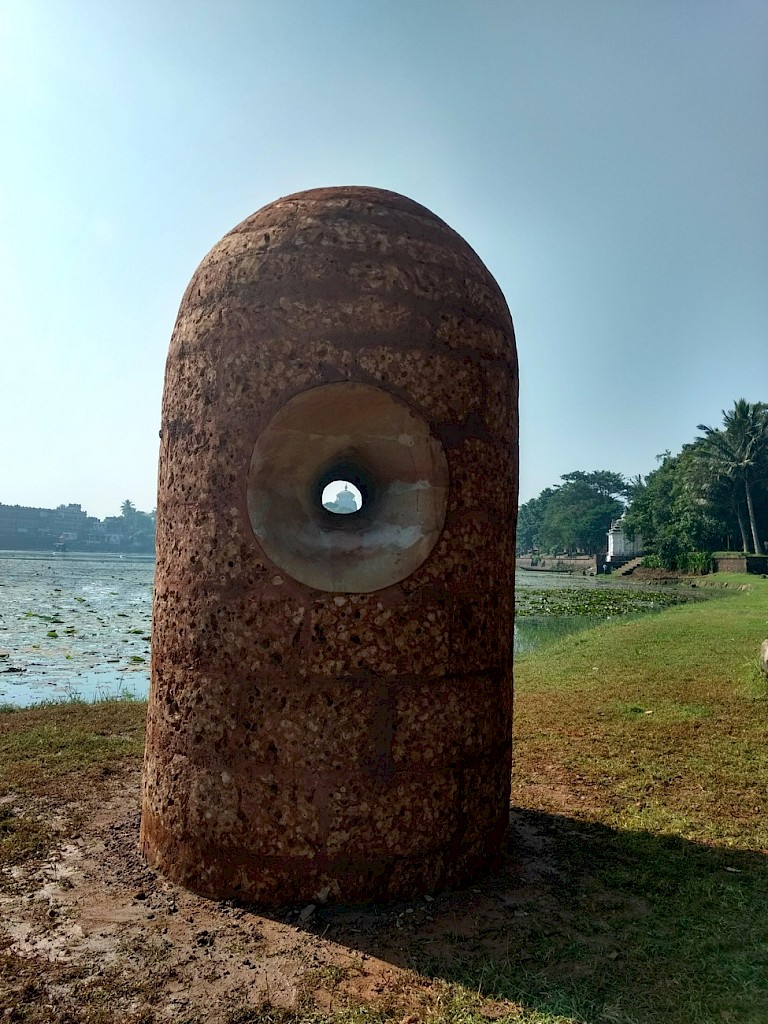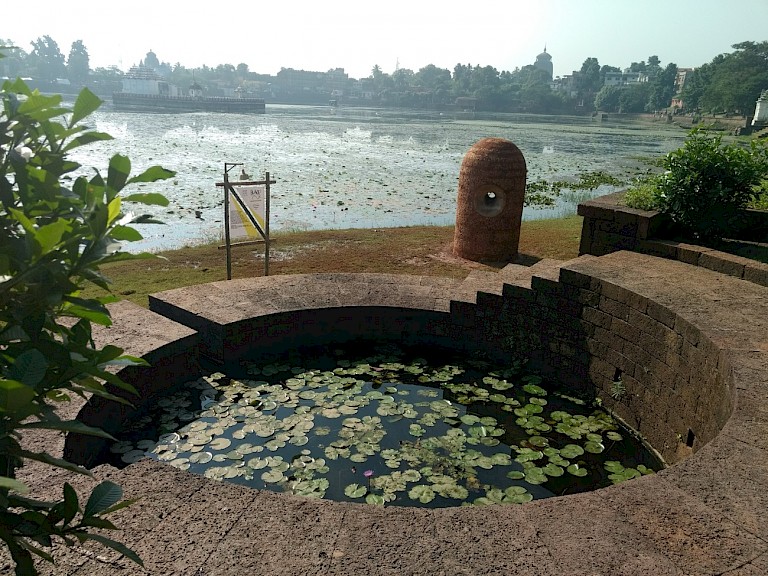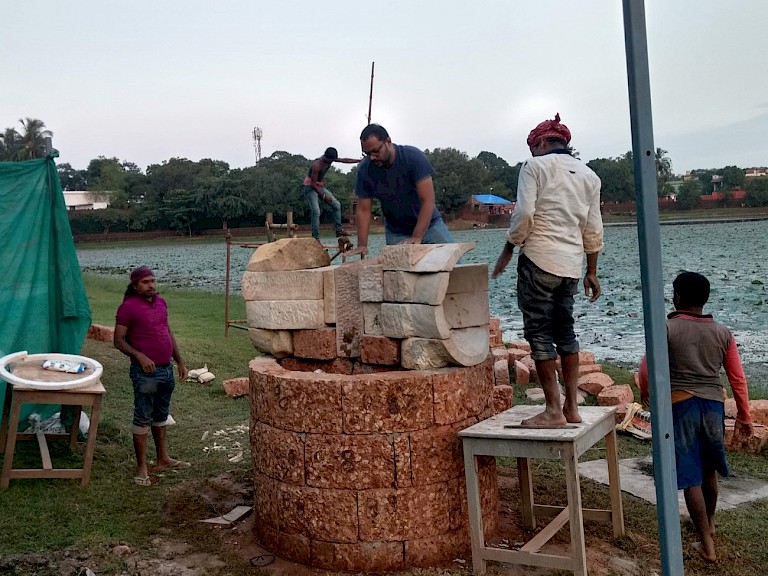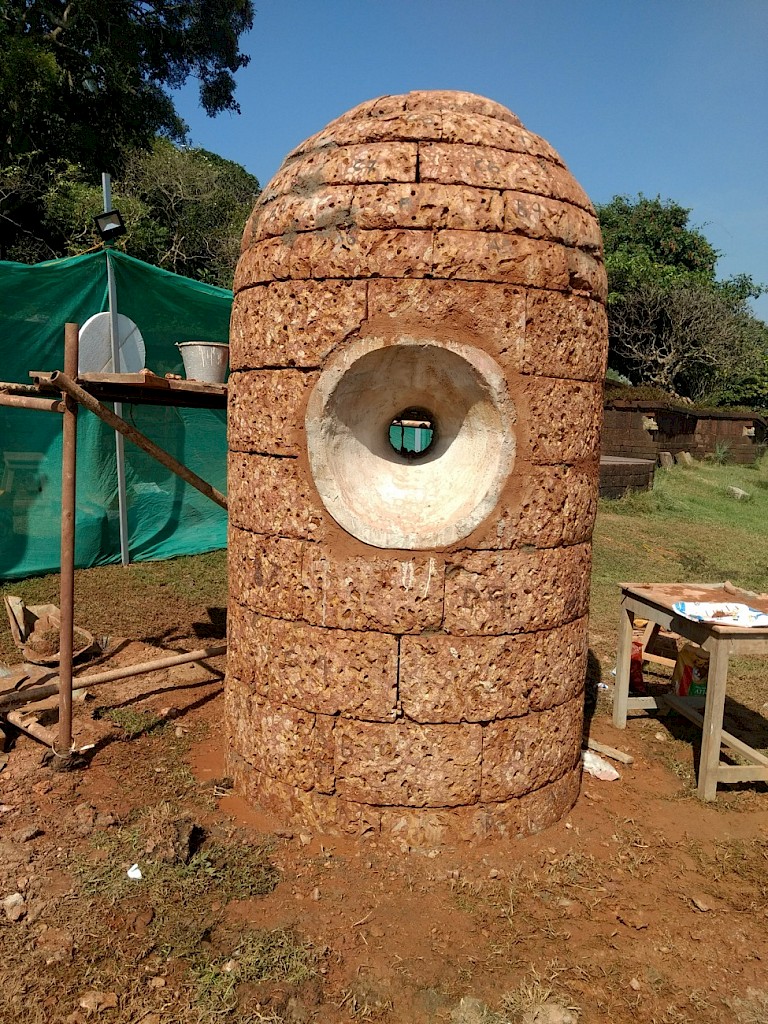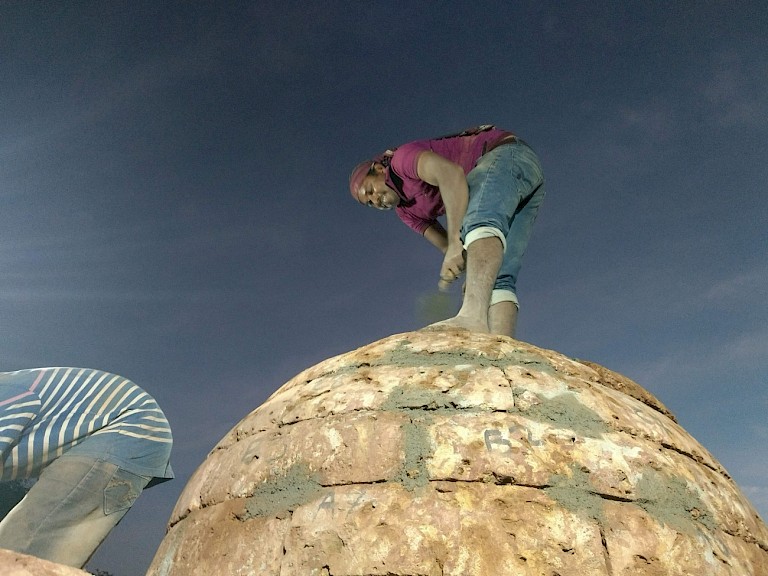



The Artist
"Sibanand Bhol, a distinguished architect from the School of Planning and Architecture in New Delhi, stands at the forefront of sustainable and responsible design. His dedication towards creating design solutions that are environmentally friendly is not just a professional choice but a passionate endeavor. This passion took root in 2003 when he began working intimately with artisans, learning the nuances of their crafts and the challenges they faced in the modern era.
In 2009, this journey culminated in the founding of Collective Craft, an initiative that merged the expertise of designers from various disciplines with the rich craftsmanship of artisans from Odisha, Sibanand's home state. Odisha, known for its vast repository of traditional arts and crafts, served as the perfect backdrop for Sibanand's vision. Through Collective Craft, he strives to rejuvenate and preserve these art forms by making them relevant in today's world, all while nurturing the livelihoods of the artisans behind them.
His travels take him deep into the villages of Odisha, interacting with craftspeople in even the most remote locations, ensuring that the heart of Odisha's artistic heritage beats strong. With an eye on expanding horizons, Sibanand hopes to engage with the conscientious market of southern India, starting with the people of Coimbatore, whom he holds in high regard. His commitment to crafts and the environment converges in his work, painting a picture of a sustainable future built on the pillars of tradition and modernity."
The inception of Liminal View was birthed from an intersection of history, craftsmanship, and contemporary introspection. The narrative of its development is not merely about the creation of an art installation but also an exploration into the depths of tradition, the challenges of modernity, and the quest for relevance.
Inspiration and Grounding:
Located within the historic core of Bhubaneswar, the Ekamra Kshetra Heritage Zone stands as a testament to Odisha's rich architectural and artistic lineage. This region, home to many temples, has witnessed the hands and hammers of generations of artisans. These craftsmen, through countless epochs, sculpted stories on stones, weaved myth into fabrics, and encapsulated divinity in metal and wood. Such a rich backdrop, steeped in centuries of tradition, naturally became the wellspring of inspiration for Liminal View.
However, Liminal View wasn't just rooted in the past. Its seeds were sown from the contemporary struggles of the young artisans grappling with the pertinence of their ancestral skills in a rapidly modernizing world. The art piece needed to reflect this dual nature – a deep respect for the past, yet an acknowledgment of the present challenges and a vision for the future.
Conception and Dialogue:
As an architect closely involved with the local artisan community, there was firsthand exposure to the existential questions these craftsmen faced. Conversations with them revealed a dichotomy – a deep-rooted pride in their inherited skills juxtaposed with a looming uncertainty about their future relevance. It was within this crucible of dialogue and understanding that the foundational idea of Liminal View began to crystallize.
The recurring theme in these interactions was the need for evolution, for the crafts to transcend mere replication and become expressions of contemporary realities. Thus, Liminal View began to take shape as a symbolic representation of this transitional phase – a liminal space between the past's grandeur and the future's promise.
Design and Symbolism:
Drawing design inspiration from the ubiquity of the Shiv Ling in the Shaivite temples of the region, the Liminal View began to embody a profound symbolism. The Shiv Ling, an emblem of divinity and tradition, was juxtaposed with a modern design element: a circular hyperboloid punctured at eye level. This feature not only provided a visual link to the revered Lingaraj Temple but also symbolized a portal – a gaze from the old into the new.
Collaboration and Realization:
The true essence of Liminal View was in its collaborative spirit. While its conceptualization was deeply personal, its realization was a collective endeavor. The art piece was not just a testament to one architect's vision but bore the imprints of numerous artisans who were part of its construction. Together, this team embarked on a journey of exploration, understanding their collective legacy, questioning their contemporary roles, and visualizing their paths forward.
The location by the Bindusagar, against the backdrop of the Ekamra Van, provided the perfect canvas for this artistic expression. The serene waters and the medicinal garden encapsulated the idea of healing and growth, further resonating with the installation's themes of introspection and evolution.
The Liminal View's development process wasn't just architectural; it was profoundly philosophical. From its initial conceptualization to its final erection, it stood as a bridge between epochs, a dialogue between the old and the new, and a beacon for the future. It encapsulated a journey, not just of stone and design but of souls and stories, seeking their space in the vast tapestry of time.
"Liminal View, as it graces the Ekamra Kshetra Heritage Zone, stands not just as an architectural statement, but as an embodiment of transformation and introspection. Delving into its multi-layered implications reveals that its influence resonates beyond its physicality, impacting the lives of artisans, the broader community, and the very discourse on art and tradition in contemporary times.
Artisanal Empowerment:
For the artisans who are navigating the complex waters of modernity, Liminal View emerges as a source of renewed inspiration and hope. By representing the crossroads of ancient legacies and contemporary possibilities, it offers a path forward for these craftsmen. It encourages them to view their rich inheritance not as a limiting factor but as a foundation upon which they can build, innovate, and carve their niche in today's world, giving them a newfound sense of purpose and direction.
Societal Dialogue:
Liminal View is more than an art piece; it's a conversation starter. It challenges society's views on tradition and modernity, urging individuals to reflect on the delicate balance between preserving the old and embracing the new. By weaving together elements of age-old religious symbolism with cutting-edge design, it pushes for a broader discourse on the evolving role of heritage in a rapidly changing world.
Educational Outreach:
For the younger generation, often distanced from their traditional roots, Liminal View serves as a bridge. It acts as an educational medium, helping them connect with the history, art, and cultural shifts that have molded the region. It provides educators with a tangible touchpoint to narrate the intricate interplay between time-honored arts and the ever-evolving contemporary influences in Odisha.
Touristic Appeal:
Being a pivotal installation of the Bhubaneswar Art Trail 2018, Liminal View enhances the region's allure for tourists. It offers more than a visual treat; it tells a story, providing visitors with a deeper dive into the cultural fabric of the area. Alongside the ancient temples, Liminal View presents a comprehensive picture of the artistic and cultural journey of the region.
Architectural Innovation:
On an architectural front, Liminal View exemplifies the vast potential that lies in blending traditional motifs with modern design philosophies. It stands as a testament to the innovative outcomes that can be achieved when respect for culture is married to contemporary design principles. It paves the way for future architectural endeavors that seek harmony between reverence for the past and a vision for the future.
In its entirety, the impact of Liminal View extends well beyond its physical presence. It serves as a clarion call, urging reflection, innovation, and a deeper appreciation of the dance between the past and the present. Amidst the rich cultural tapestry of Odisha, Liminal View stands as a symbol of transition, resilience, and hope for the future."
